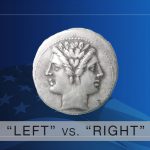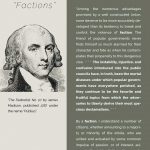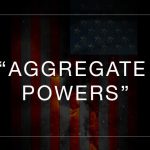Last Updated on October 3, 2021 by Constitutional Militia
Well, boys and girls, it is, as the wag once said, “déjà vue all over again” in the topsy-turvy Alice-in-Wonderland world of “gun control”. The latest piece of in-your-face effrontery from The Powers That Be is the decision of the United States Court of Appeals for the Second Circuit, which upheld the supposed constitutionality of the statutes recently enacted by New York and Connecticut which deny the citizens of those States the right to keep and bear, without infringement to the point of extinction, the very arms they need to possess in order to perform their constitutional duty to serve in “well regulated Militia”.
I am not going to elaborate on the obvious dishonesty of this decision. (Out of an excess of charity, some might say “imbecility” instead of “dishonesty”. But I do not believe that individuals who can so maneuver themselves through the tortuous political maze of Washington, D.C., as to become judges in the General Government’s courts are likely to be imbeciles—or are entitled to be exonerated from their misdeeds on that facile basis.) Those who want to focus on criticism of the Second Circuit’s opinion because of its studied irrationality, as well as its duplicitous departure from the Supreme Court’s earlier (and themselves hopelessly flawed) opinions in Heller and McDonald, can (if they have nothing better to do) read such a restrained yet pithy commentary as David Kopel’s opinion-piece in The Washington Post of 21 October 2015, entitled “2nd Circuit upholds N.Y. and Conn. arms bans; contradicts Heller and McDonald”. This sort of sound analysis of judicial malfeasance could form a succinct and accurate chapter in a modern-day Gibbon’s Decline and Fall of the American Republic—but, unfortunately, with about as much effect on forestalling that outcome as Gibbon’s original opus had on preventing the decline and fall of the Roman Empire.
More to the point is to ask all of the self-styled advocates of the last fourteen words of the Second Amendment: “What do you intend to do now?” For this type of judicial decision is precisely, and predictably, where the so-called “individual-right theory” of that Amendment—the theory that divorces the true “right of the people to keep and bear Arms” from “[a] well regulated Militia” which is “necessary to the security of a free State”—leads. Namely, to endless litigation in a judicial system controlled largely by the enemies of “a free State”, in which the best for which “constitutionalists” and “patriots” can hope are half-baked (and, one must fear, only temporarily valid) decisions such as Heller and McDonald, which contain the seeds their own inevitable destruction in their sophomoric misreadings of the Second and Fourteenth Amendments.
How can this relentless subversion of the Constitution—aiming at the eventual obliteration of “a free State” everywhere throughout this country—be avoided, or even retarded? The answer is as straightforward as the first thirteen words of the Second Amendment, which the proponents of “the individual-right theory” treat as basically meaningless: namely, to end “gun control” as it operates today, Americans need to revitalize “the Militia of the several States”, step by step in one State after another.
I am not going to repeat in this commentary everything which I have written, at great length elsewhere, about the Militia—such as their pre-constitutional legal history, their relationship to the Declaration of Independence, their place in the Constitution’s federal system, their salient characteristics, or especially their crucial importance as the institutions which the Constitution itself declares to be uniquely and permanently “necessary to the security of the free State”. Neither am I going to emphasize the urgency of patriotic Americans’ self-education on this score. Here, I intend merely to suggest how this knowledge—knowledge, after all, being the prerequisite to power—could easily be put to profitable use. Perhaps not at the present time in New York or Connecticut or any other of the political racketeering enterprises that posture as “States” in contemporary America—but surely in some States in which a critical mass of citizens and public officials has yet to succumb to the perverse attitudes against arming the general populace which characterize such “progressive people’s republics” as North Korea.
To do this, I must treat as valid for purposes of argument certain statutes which, to some degree, are palpably unconstitutional. But, the imperfections, even lunacies, of contemporary America’s legal system being what they are, one has little choice other than to proceed on the basis of the old adage that “it takes a crooked stick to beat a mad dog”.
In Article I, Section 8, Clause 16, the Constitution delegates to Congress the power—and, as well, imposes upon it the duty—“[t]o provide for organizing, arming, and disciplining, the Militia”, so that the Militia will be capable of responding to any exercise of Congress’s power and duty under Article I, Section 8, Clause 15 “[t]o provide for calling forth the Militia to execute the Laws of the Union, suppress Insurrections and repel Invasions”. The Militia to which these provisions refer are “the Militia of the several States”—that is, the multiple institutions of the States, taken separately, as opposed to a single institution of the United States, taken collectively—which the Constitution identifies as such in Article II, Section 2, Clause 1. Plainly enough, such “affirmative words in the Constitution * * * must be construed negatively as to all other cases”. Ex parte Vallandigham, 68 U.S. (1 Wallace) 243, 252 (1864) (emphasis in the original) (footnote omitted). Accord, Marbury v. Madison, 5 U.S. (1 Cranch) 137, 174 (1803); and Cohens v. Virginia, 19 U.S. (6 Wheaton) 264, 394-395 (1821). So, Congress lacks any color of authority to disorganize, disarm, and leave undisciplined the Militia for those three purposes, or to treat the Militia as other than separate institutions of each the fifty States, which for those purposes and those purposes alone “may be employed in the Service of the United States”, pursuant to Article I, Section 8, Clause 16 and Article II, Section 2, Clause 1. And, the Constitution having delegated to Congress no other powers with respect to the Militia, Congress lacks any color of authority to legislate as to them in any other way for any other purpose.
Nonetheless, instead of doing what the Constitution requires (and of not doing what the Constitution prohibits), Congress has purported in 10 U.S.C. § 311 to consign to a chimerical institution which it calls “the unorganized militia” every American citizen or legally aspirant citizen from 17 to 44 years of age who is not a member of the National Guard. This institution is truly chimerical, because no constitutional Militia, by historical legal definition in America, can ever be a “militia” and “unorganized” at the very same time, any more than a circle can ever be a square. (In this same statute Congress calls the National Guard “the organized militia”; but anyone who reads other statutes relevant to the formation and characteristics of the National Guard will conclude that the National Guard actually consists, not of any sort of “militia”, but instead of the “Troops, or Ships of War” which the States may “keep” “in time Peace” “with[ ] the Consent of Congress”, pursuant to Article I, Section 10, Clause 3 of the Constitution.) Even beyond all that, Congress has purported to enact extensive “gun controls” the obvious intent of which is the incremental but inexorable disarmament of all Americans, including those whom it claims to have assigned to “the unorganized militia”—thus, in effect, decreeing that “the unorganized militia” is to be now largely, and eventually entirely, disarmed as well as disorganized. This, too, is fantastical, because no constitutional Militia, by historical legal definition in America, can ever be “disarmed”, any more than a triangle can ever be a rectangle.
Because the Militia are “the Militia of the several States”—that is, permanent governmental establishments of, in, and for each of the individual States—the Constitution requires that each State organize, arm, and discipline her own Militia for all purposes other than the three it assigns to Congress (and for those three as well, to the extent that Congress fails in its constitutional responsibilities in that particular). Yet, following the faulty Congressional pattern, the States have dumped into “the unorganized militia” those of their citizens who are not members of the National Guard and its related State “defense forces”. And all too many of the States, such as “the people’s republics” of New York and Connecticut, are aggressively disarming their citizens, including those within “the unorganized militia”.
This sow’s ear of a situation, however, can be transformed into a silk purse. True enough, little hope can be had for using Congress even to restrict “gun control”, let alone to revitalize the Militia for the purposes the Constitution allows to the General Government. But the States (or at least some of them) offer the opportunity to end “gun control” within their own territories through their partial revitalization of their own constitutional Militia, in a manner which the General Government can do nothing to thwart.
Take this author’s home State of Virginia as an example: Having fallen into line with Congress’s faulty formulation, in Code of Virginia §§ 44-1 and 44-4 the Commonwealth has assigned most of her citizens to “the unorganized militia”. But because the Militia are by constitutional definition “the Militia of the several States”, not “the Militia of the United States”, and because Congress cannot change that or any other constitutional definition or standard relating to the Militia, Virginia always retains the constitutional authority to organize, equip, and train her own Militia—whether inaccurately denominated “the unorganized militia” or otherwise—in her own way for her own purposes, as long as whatever she does conforms to the basic constitutional strictures applicable to “Militia”. Notwithstanding that Congress has explicitly decreed that most Virginians (and most other Americans, too) are to be “unorganized”—and has implicitly provided that they are to be unarmed and undisciplined as well—for the purposes for which Congress can call them forth as members of the Militia, Congress cannot constitutionally require Virginia (or any other State) to leave those people “unorganized”—or unarmed or undisciplined, either—for the myriad other purposes for which she alone may call them forth, because Congress wields no constitutional authority whatsoever over “the Militia of the several States” as to any of those other purposes. For part two click below.




































